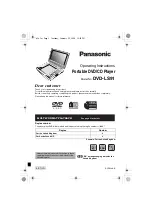
www.scheppach.com /
+(49)-08223-4002-99 /
+(49)-08223-4002-58
24 | GB
Service information
Please note that the following parts of this product
are subject to normal or natural wear and that the fol
-
lowing parts are therefore also required for use as
consumables.
Wear parts*: spark plug
* Not necessarily included in the scope of delivery!
14. Disposal and recycling
The equipment is supplied in packaging to prevent it
from being damaged in transit. The raw materials in
this packaging can be reused or recycled. The equip
-
ment and its accessories are made of various types
of material, such as metal and plastic. Defective
components must be disposed of as special waste.
Ask your dealer or your local council.
Old devices must not be disposed of with house-
hold waste!
This symbol indicates that this product must
not be disposed of together with domestic
waste in compliance with the Directive
(2012/19/EU) pertaining to waste electrical
and electronic equipment (WEEE). This product must
be disposed of at a designated collection point. This
can occur, for example, by handing it in at an author
-
ised collecting point for the recycling of waste elec
-
trical and electronic equipment. Improper handling
of waste equipment may have negative consequenc
-
es for the environment and human health due to po-
tentially hazardous substances that are often con
-
tained in electrical and electronic equipment. By
properly disposing of this product, you are also con
-
tributing to the effective use of natural resources.
You can obtain information on collection points for
waste equipment from your municipal administration,
public waste disposal authority, an authorised body
for the disposal of waste electrical and electronic
equipment or your waste disposal company.
Batteries and rechargeable batteries do not be-
long in the household waste!
As the consumer you are required by law to
bring all batteries and rechargeable batteries,
regardless whether they contain harmful sub
-
stances* or not, to a collection point run by the local
authority or to a retailer, so that they can be disposed
of in an environmentally friendly manner.
*labelled with: Cd = cadmium, Hg = mercury, Pb =
lead
2
Unscrew the spark plug (f) and check it.
3
If there is any damage, e.g. cracks or chips, re
-
place the spark plug.
4
Clean the spark plug electrodes with a wire brush.
5
Check and set the electrode gap (0,6 mm)
6
Screw the spark plug in and tighten with the spark
plug spanner.
7
Place the spark plug connector on the spark plug
When replacing, ensure that no dirt gets into the
cylinder head.
Check the fit of the spark plug.
A loose spark plug can cause damage to the engine
by overheating.
Pulling too hard can damage the thread in the cyl
-
inder head.
The manufacturer is not responsible for the re-
sulting damages; the user solely bears the risk.
Only use the recommended spark plugs or iden-
tical spark plugs.
Clean the air filter (Fig. 9 + 10)
1
Loosen the locking (c)
2
Remove the filter cover (15)
3
Clean the foam pre-filter (d) in a non-flammable
solvent.
Attention: Do not use petrol or cleaning solvents
with a low flash point to clean the air filter ele
-
ment. This could result in fire or explosion.
4
Squeeze the pre-filter in order to remove the sol
-
vent/soapy water.
5
Clean the paper filter by tapping it.
6
Rinse the washed filter element with clean water.
7
Allow the filter element to dry or blow it dry with
compressed air.
8
Close the filter cover again and secure it by using
the locking.
If the engine is operated in very dusty environments,
clean the air filter daily or after every ten operating
hours.
Never run the engine without an air filter or with a
damaged air filter. This would allow dirt into the en
-
gine, which would result in severe damage to the
engine.
The manufacturer is not responsible for the resulting
damages; the user solely bears the risk.
Important note in case of repair:
When returning the generator for repair, for safe
-
ty reasons, ensure that it is
free of oil and petrol
when it is sent to the service centre.
















































